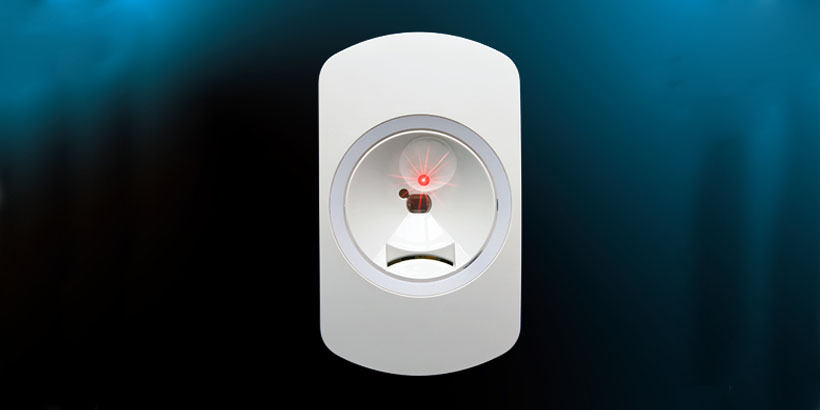
The ability to signal masking attempts of detectors when an alarm system is unset, whether deliberate of accidental, is a fundamental requirement for any Grade 3 intruder detection system. The criteria, set out in BS EN 50131-1, ensures that all Grade 3 sensors designed for use in medium to high-risk applications can sense masking attempts and signal these to the control panel, preventing the system from being set while the sensors are compromised.
Deliberate masking attempts include placing material over the lens of a sensor, or painting or spraying the lens, to prevent it from accurately detecting motion. Intruders can mask sensors, allowing them to return when the premises are unoccupied, and not be detected by compromised sensors.
Grade 3 systems also protect against accidental masking. Too often, employees or contractors will not consider the performance of the alarm system and might stack pallets or boxes in the direct line of sight of a sensor. In retail environments, signage or banners might be hung close to the detectors, blocking their field of view. As with deliberate masking, these issues will be detected and signalled to the panel, preventing the system from being set until the blockage is removed.
The anti-mask function in Grade 3 intruder detectors works separately to the main detection technologies. Typically, anti-mask functions make use of microwave technology or active infrared sensing. As with most detection technologies, both approaches have benefits, but can be susceptible to false activations in certain circumstances. Given the target applications for Grade 3 systems include higher risk commercial properties, installers must consider the options available.
Microwave technology makes use of a bubble of protection in front of the detector lens, which is the part of the device which will be masked. The microwave element makes use of the doppler effect to detect objects in close proximity to the front of the detector, assuming any detected objects are masking the unit.
Microwave detection does work well, but the issue with using it as a sole technology for mask detection is that microwave signals can be inconsistent when close to the emitting source. As a result, it can be possible for an intruder to use a subtle method of masking, such as sprays, to defeat the detector and this may not be correctly sensed. Also, because of its nature, microwave anti-mask sensing can pick up innocuous events which might not be consistent with a masking attempt.
Some installers might believe microwave technology is a good solution for anti-masking, because it is commonly used by several manufacturers. However, part of the reason it is a popular choice comes down to the fact that few additional components are required to add the feature to many detectors.
Active infrared (IR) sensing measures the reflected signals of IR emitted from the detector. When a masking object is placed in front of the unit, the reflections change. Active IR detection has a high degree of accuracy when detecting masking attempts but can be affected by white light levels.
When designing the Capture range of Grade 3 intruder detectors, Texecom paid attention to the issue of reliable and stable anti-mask detection. To deliver best-in-class protection which installers and their customers can trust, the manufacturer used active IR detection using a transmitter and receiver pair and supports the active IR sensing with microwave technology. This combination sets a new benchmark for performance and ensures a high degree of accuracy, suited to the needs of Grade 3 higher risk applications.







